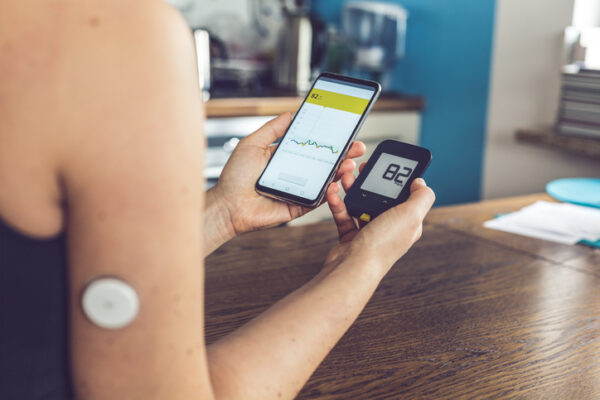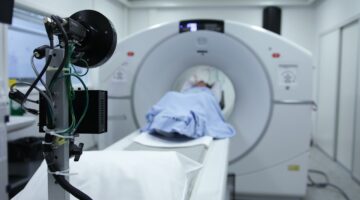
Chronic diseases kill over 1.7 million Americans each year, making them the country’s leading cause of death. This number only continues to go up, and it’s clear that today’s sick-care model isn’t cutting it. Instead, the U.S. needs to turn to a system that prioritizes earlier intervention and personalized care to better support patients with complex needs.
Rather than relying on piecemeal point solutions, the industry should shift toward an integrated approach that promotes preventative care and chronic disease management. Then, holistic, whole-person care will become the new standard, transforming care for specific populations like high-risk individuals. By incorporating monitoring solutions into care plans, we can lead patients toward a proactive path for improved health outcomes and more connected care.
How monitoring technologies can support chronic care management
Roughly half of the U.S. population lives with at least one chronic disease, and monitoring solutions offer this group valuable around-the-clock check-ins. Imagine patients with heart disease. A digital blood pressure cuff allows them to check their blood pressure at home and identify potential concerns before severe complications like stroke or heart failure occur. With these solutions, care can be delivered outside of the exam room and improved patient adherence can drive healthier lives.
Not only are patients empowered by taking control of their health through virtual monitoring, but they can also experience a more deeply connected care model. Providers can see more real-time health data than ever before, and patients can keep everyone from primary care providers to specialists aware of their ongoing health. This seamless communication enables the closing of more care gaps, modifications of care plans as needed, earlier intervention, and fewer preventable hospital visits. By engaging in a connected care approach, patients can better manage their chronic conditions and experience a higher quality of life.
Home-based monitoring solutions support more than patients with complex needs. They are especially valuable for patients in underserved and rural communities. With these solutions, certain barriers, like long distances to the nearest provider, no longer block access to care, delivering easier patient access than ever before. Then patients can view essential health insights and interventions from the comfort of their homes.
But virtual or remote monitoring reaches outside the home, as well. Community-based health stations serve as a powerful resource to at-risk populations for chronic disease prevention and management. These stations enable individuals to check various health indicators, helping them identify their risk for chronic conditions like hypertension, obesity, and type 2 diabetes. And health stations go beyond early intervention and care management; they also promote health literacy and inspire action by guiding patients to the next steps in their care.
Improving preventative care and chronic disease management
Many of the chronic disease-related deaths in the U.S. are preventable, yet the country lacks an effective preventative care model. The first step to changing this starts with an evaluation of why our current approach isn’t working and a shift toward a more integrated approach. By combining home-based monitoring tools, mobile stations, and coordinated care services, patients receive more tailored care that identifies and can help mitigate health disparities, all while meeting them where they are.
A consistent, hybrid model encourages coordinated care that goes beyond a single condition. For example, patients with complex conditions such as chronic kidney disease often have other diagnoses like diabetes or heart disease, making it essential to deliver comprehensive care. By incorporating a whole-person approach, patients experience improved overall well-being and health outcomes.
The key to this approach will be technology. Tools that facilitate continuous, multi-level monitoring and support will lead to better care management for patients with complex needs. Digital tools like blood pressure and glucose monitors, electrocardiography and heart rate monitors, medication monitoring, and personal emergency response systems work together and provide vital insights on the patient’s health. Through the health data collected by these solutions, patients and care teams can flag immediate concerns and long-term trends, driving quicker intervention and more personalized care.
Ultimately, the goal of a multi-level approach to monitoring is to deliver the right care for the needs of each member. By including varying levels of oversight, providers can ensure that the right care is delivered at the right time for each patient.
It’s time that the healthcare industry transitioned from isolated point solutions to an integrated care model that incorporates remote monitoring and virtual care management. Over 142.66 million adults aged 50 and older will be living with chronic conditions by 2050. As the population ages, it’s critical that care teams monitor patients’ health outside of clinical settings and intervene before emergent episodes occur. Monitoring solutions open patient access, encourage preventative care, and support Medicare and high-risk populations living independently and playing an active role in their health.
Photo: dzika_mrowka, Getty Images
Jeff Bennett was appointed Chief Strategy and Innovation Officer in October 2023 after joining Modivcare in July 2023 through the acquisition of Higi. He has approximately 30 years of experience and is passionate about preventative healthcare.
Prior to joining Modivcare, Jeff was CEO of Higi, a consumer health engagement company that meets people where they are. Previously, he was Managing Director of Merrick Ventures where he played a strategic advisor role for portfolio companies, including the turnaround of Merge Healthcare prior to its $1 billion acquisition by IBM. Jeff also served as Vice President of Corporate Strategy and Investments at Ygomi and held executive positions at BridgePort Networks and PrairieComm.
Jeff received his Bachelor of Science in Mechanical Engineering from Purdue University and has a Master of Business Administration degree from the Kellogg Business School at Northwestern.
This post appears through the MedCity Influencers program. Anyone can publish their perspective on business and innovation in healthcare on MedCity News through MedCity Influencers. Click here to find out how.











